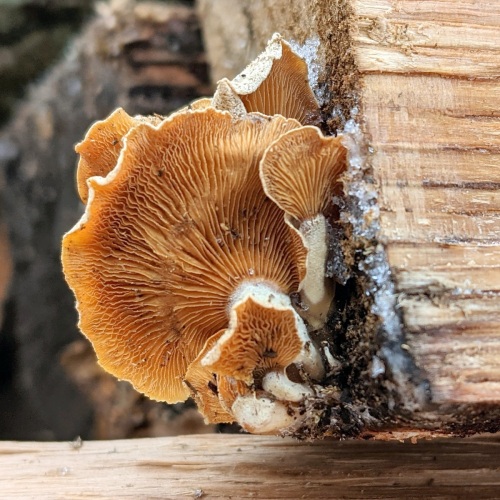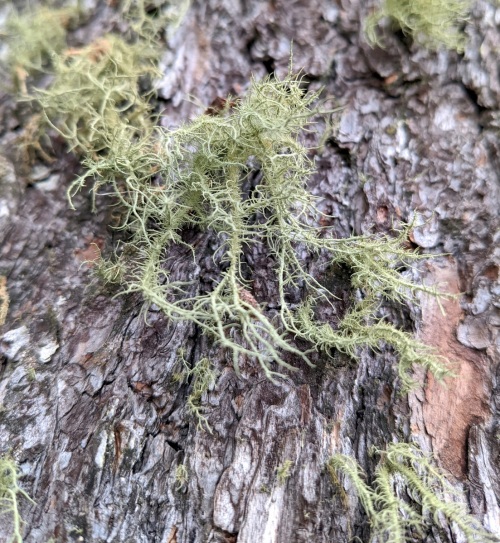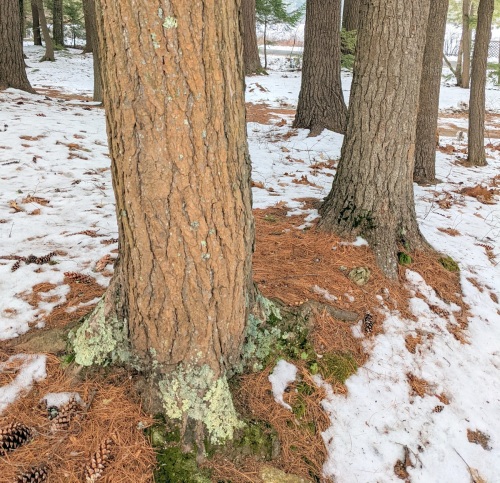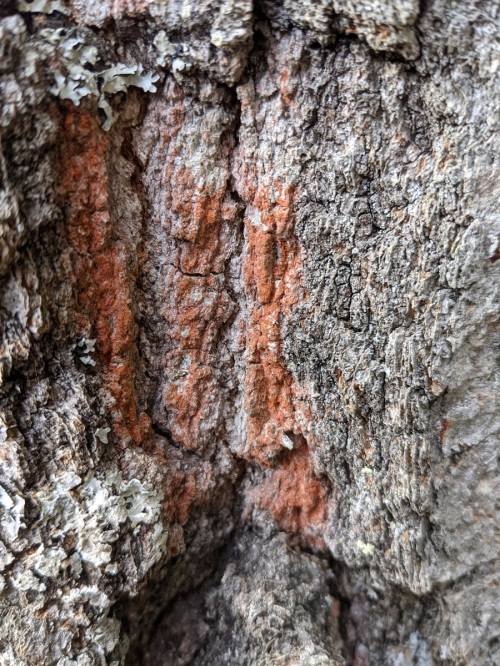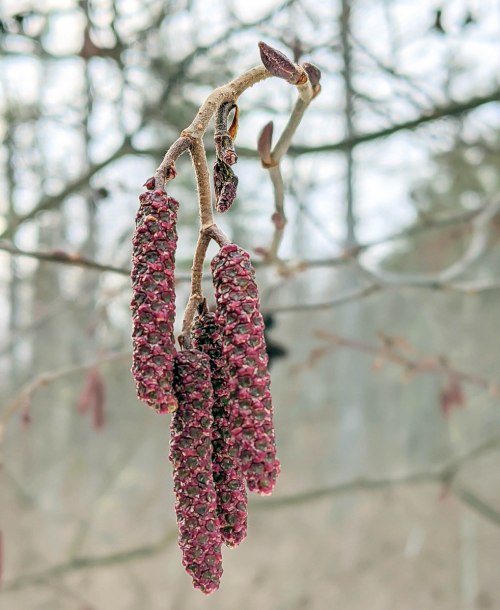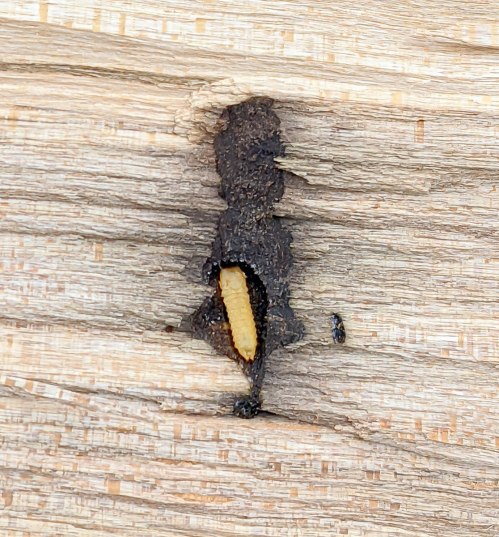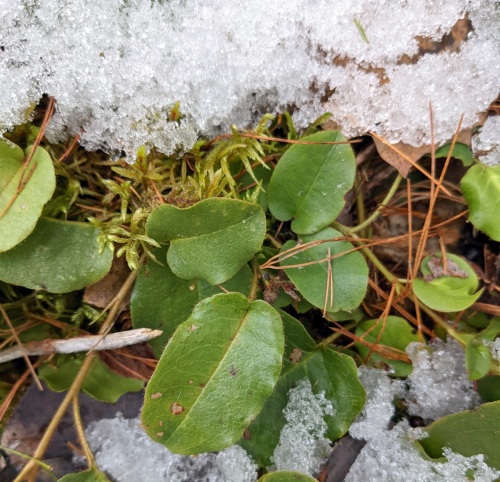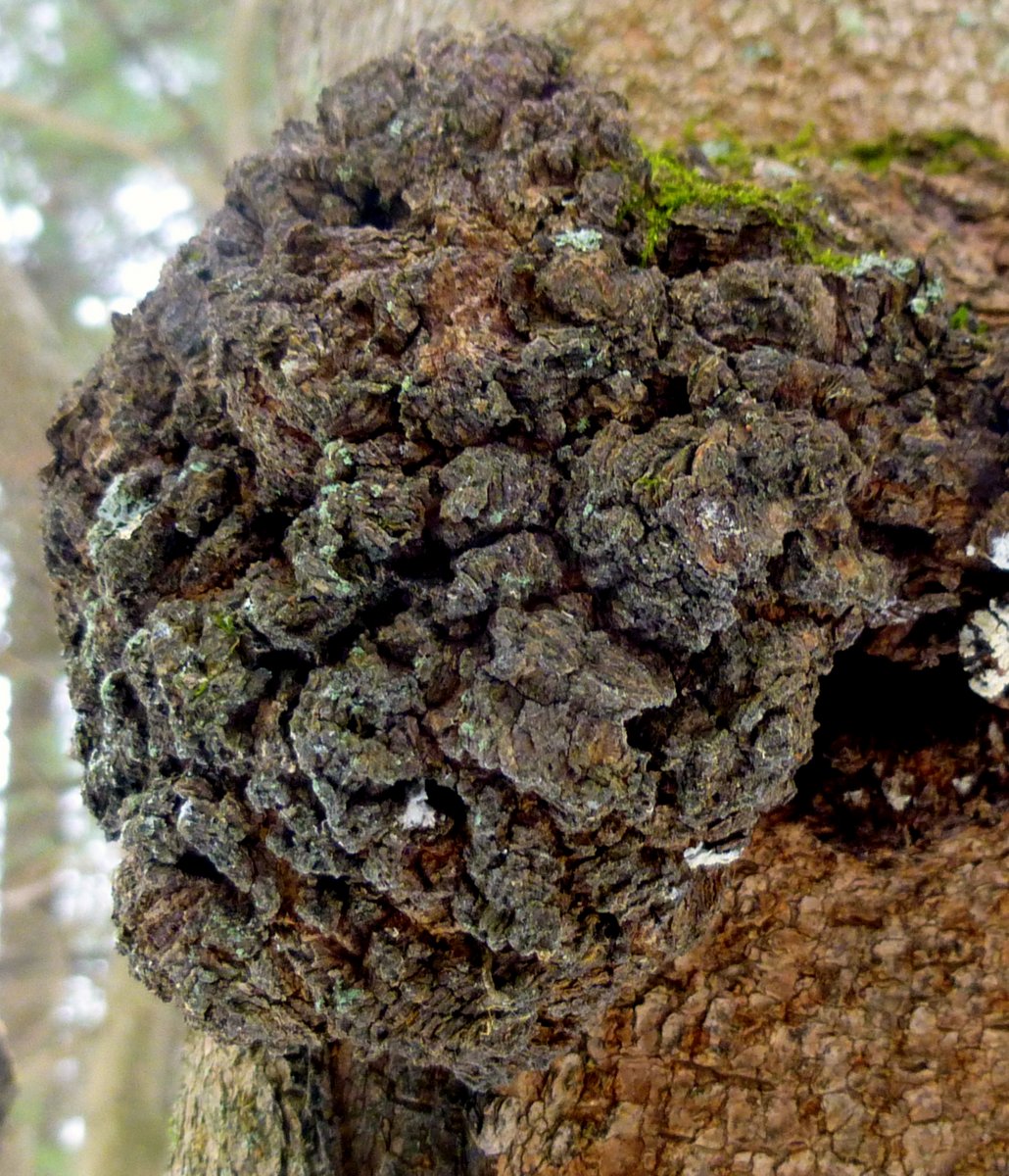
I drove north out of Keene Wednesday, thinking I’d do a climb but I saw that there was still a lot of ice and snow in the woods so I decided against climbing that day. Instead I went to Yale Forest in Swanzey, where there is always something interesting to see.

There was ice here as well, but not enough to matter.

Off in the woods I saw a mossy log. Since I was still looking for a chance to see what my new camera could do with a spore capsule, I decided to take a look.

But this log was as smooth as if it had been shaved. It wore a velvet coat of moss that didn’t have a single spore capsule in it.

Even the haircap mosses (Polytrichum) were capsule free.

A big red pine had fallen and that was a surprise because I hadn’t realized that they grew out here. I thought that any red pines found in this area had been planted but I wasn’t sure of that, so I went to the Yale University Forestry website and found that they were indeed planted here after the 1938 hurricane blew down much of the original natural growth. Thousands of trees were lost in that storm in Keene and surrounding towns. My grandmother told of driving from Marlborough to Keene in what she thought was a rain storm until she started seeing trees falling in her rear-view mirror. Luckily, she made it without a scratch.

It wasn’t a hurricane that took this tree, however. There was lots of bark beetle damage on it. They can girdle a tree just under its bark and once girdled, it dies. These particular beetle runs were much larger in width than those found on white pines.

Lots of bush clover grew along the road in sunny spots. These are last year’s seed heads.

What ice there was on this trail was rotten, as could be seen by its milky, opaque appearance. When I walked on it instead of being slippery it just crushed into pieces and I’d guess by the next day it was gone.

I saw these strange tracks further on and wondered who would be hauling what looked like a cart through here. Then later on I met up with a lady who was pushing her grandson (?) in a three wheeled baby stroller. It seemed that it would be very hard work pushing it over ice and through snow but she was smiling and mentioned what a great day it was, so she must have been doing okay with it. I hoped I’d never meet up with her in an arm-wrestling contest.

I found a pencil size branch with some split gill fungi (Schizophyllum commune) on it. These tough, wooly coated bracket fungi are true winter mushrooms that appear in late fall. Split gills grow on every continent except Antarctica and are said to be the most studied mushroom on earth. It is known for its medicinal properties, which include antifungal and antiviral qualities. These examples were maybe three quarters of an inch across and that’s about as big as I’ve ever seen them get.

The “gills” on the split gill fungus are actually folds of tissue on its underside that split lengthwise when the mushroom dries out. The splits close over the fertile spore producing surfaces in dry weather and open to release the spores when they’re rehydrated by rain. As is all life, this little mushroom is driven to to ensure the continuation of the species, and that’s why it has increased its spore bearing surfaces with these folds of tissue. It’s an unusual strategy that makes this little mushroom very pretty.

A young red maple had fallen across the trail but luckily it rested high enough to walk under. I’d guess fungi weakened it and the wind did the rest.

Soon enough I was at the outflow stream from the beaver pond, which I was going to have to jump. Since the stream is getting wider all the time it gets harder to jump each time, but I just made it without getting wet. Apparently, my shadow decided to stay put while I looked for a suitable jumping spot. I can’t explain it; I was the only one there and I didn’t notice it until I saw the photo. Either there must be a human shaped tree out there somewhere or I had a very quiet companion.

The beavers hadn’t repaired their dam yet and by the looks of the ice on their pond they wouldn’t be doing anything any time soon. I’m sure the unlucky people who had to take it apart are happy about that. Taking beavers dams apart is hard work.

I thought this was a beautiful scene with the bright sunshine and all the colorful beeches.

This was my attempt to get a shot of beech leaves backlighted by the sun. When I could see again, I returned to the trail.

I saw some turkey tail fungi (Trametes versicolor) with a little blue in them, which just happens to be my favorite color, so I was pleased. I’ve searched for many years now trying to find out what determines what colors a turkey tail will be but apparently nobody knows.

There was quite a large vernal pool thawing in the woods and I wondered how I missed it on the way in. I’d guess that it won’t be long before it’s full of tadpoles.

The last thing I noticed on the way back was a long beaked bird’s head on a log. The last time I was out here last fall I saw an old man’s face in a branch, so this place seems full of interesting “wood spirits.” Seeing faces and other objects where there are none is called Pareidolia and it is said to be a normal human tendency.

One of the best examples of Pareidolia that I can think of is the “Old Man of the Mountain.” The profile could be seen in the White Mountains of New Hampshire until it fell on May 3, 2003. This photo by Jeffery Joseph was taken just seven days before the event. Many thousands of people traveled from all over the world to see the “Great Stone Face” (actually a series of 5 granite ledges) so I suppose it might have been called mass Pareidolia.
One who returns to a place sees it with new eyes. Although the place may not have changed, the viewer inevitably has. For the first time things invisible before become suddenly visible. ~Louis L’Amour
Thanks for coming by. And Happy Spring! (Tomorrow)



























